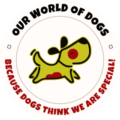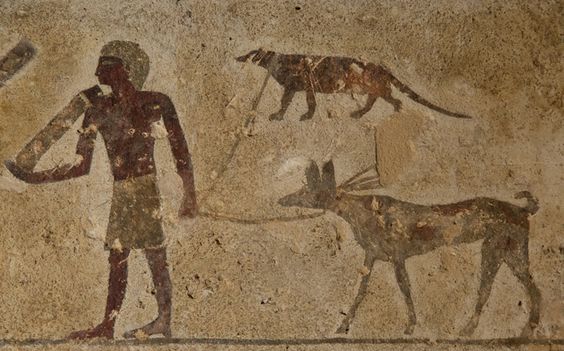
Introduction: In the Cradle of Civilization’s Awakening
Imagine the world of 30,000 BC, during the Upper Paleolithic era—a time when the breathtaking beauty of nature was completely overshadowed by the unpredictability of a world ruled by the harsh law of the jungle. Survival of the fittest was the only rule in play during this era. In this era, trust was not merely a luxury; it was a rare treasure, difficult to find amid the constant threats from wild animals and rival humans. It was a period when even one’s own shadow could not be trusted, a time desperately in need of a dependable companion who could offer both protection and absolute loyalty. It seemed as though the pleas for help were answered, and in response, nature provided a remarkable creature already roaming the Earth. Yes, the one that could be trusted more than one’s own shadow.
Amid the vast and untamed landscapes, under a sky littered with ancient stars, a monumental alliance was formed—one that would resonate through the ages. Of all the creatures roaming the earth, only one would rise to earn the revered title of ‘Man’s Best Friend.’ This epoch marked the genesis of one of the most profound relationships in the annals of natural history: the bond between humans and dogs. This was no mere acquaintance between species but the spark of a companionship that would come to epitomize survival, loyalty, and mutual respect. This relationship will stand the test of time; it will endure through the rise and fall of civilizations, dynasties, and empires, as well as through wars, revolutions, and renaissances, weathering the storms of change and the shifts of power. It will remain forever an emblem of the unbreakable bond forged in the crucible of early human history.
In this expansive age of ice and darkness, lit only by the ethereal glow of celestial bodies, humans and wolves discovered a path of mutual benefit. More than just survival, this path promised a shared destiny, a future crafted together. Emerging from the primal shadows of prehistory, this partnership was poised to shape the destiny of both species profoundly.
As early humans navigated the perilous terrains of a world in flux, their initial cautious interactions with wolves gradually transformed into a deep, symbiotic relationship that broke the typical boundaries of nature. Together, they faced the harsh challenges of their environment, from securing food to defending against predators. Each step they took together solidified a bond that was built on a foundation of mutual need and strengthened by the fires of respect and deep affection.
As we look back at these formative years, we do more than just recount the harsh realities they endured; we delve into the emotional and evolutionary depths of this incredible alliance. This narrative transcends mere survival—it speaks to the profound emotional connections that can develop between different species, connections that endure and evolve, profoundly impacting the essence of each being involved. This enduring bond, tested by the trials of time and hardship, stands as a moving testament to the power of loyalty and friendship. It shapes our understanding of companionship and continues to influence our relationships with these faithful companions to this very day.

Section 1: The Ancient Earth – A Canvas for Transformation
The Theater of Evolution
Between 30,000 BC and 10,000 BC, our planet was a vibrant stage, depicted with the sweeping movements of geological shifts and ecological changes. As the world emerged from the icy clutches of the last Ice Age, massive glaciers receded, carving out new terrains and forming expansive plains and fertile valleys. These freshly sculpted landscapes invited both man and beast into territories unknown, filled with both hurdles and possibilities. Rivers forged new paths, forests expanded across large areas, and plant and animal life thrived, adapting to a world in flux. This dynamic setting laid the foundation for significant shifts in the world’s living scenery.
A Crucible of Change
In this ever-changing environment, early humans, armed with stone tools and developing social bonds, faced a crucible that tested their adaptability and creativity. They roamed the land by necessity, navigating stark and stark environments in pursuit of sustenance and shelter. Amidst this constant change, the roles within tribes evolved; the boundaries between predator and prey softened as wolves, driven by curiosity and caution, approached human camps. Attracted by the warmth of fire and the potential for food, these encounters offered the wolves a chance at a less arduous life adjacent to human activity.
Echoes of an Ancient Bond
These initial meetings, characterized by cautious mutual recognition, set the stage for a significant transformation shared by both species. This gradual process of evolution saw the development of traits such as trust, courage, and compassion within both humans and their canine counterparts. Over many generations, these interactions grew more frequent and increasingly vital, forming a network of mutual dependence that transcended the simple benefits of additional warmth or easier access to food.
This relationship evolved beyond mere coexistence to a profound mutual development, where the challenges of survival were met with the strengthening of emotional connections, creating a joint future. Humans gained from the heightened senses of their new companions, improving their hunting capabilities and security, while wolves secured a stable source of food and protection from other predators by aligning with human groups. Together, they faced the challenges of their era, their paths becoming ever more entwined. These early connections established a deep-rooted culture of loyalty and companionship that would define the human-dog relationship, enduring through the ages as a symbol of their combined journey through time.
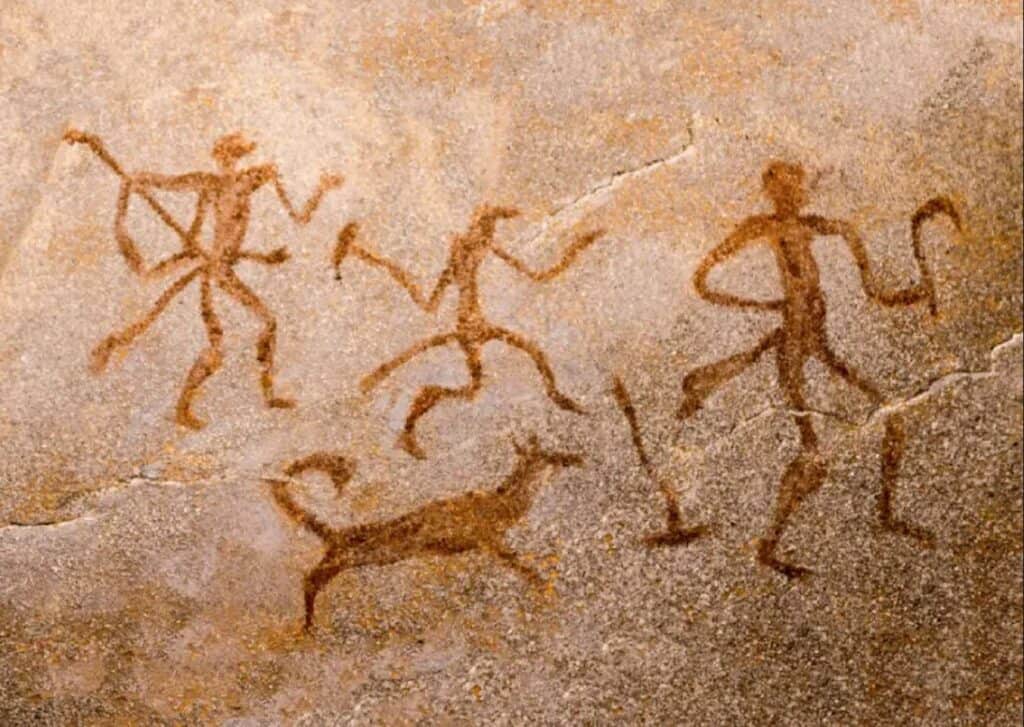
Section 2: First Light of Fellowship – The Human-Canine Bond Unfolds
Unveiling the Origins
The story of early interactions between humans and wolves is assembled from a collection of archaeological findings and anthropological studies. Each discovery, whether it’s ancient burial sites or the subtle imprints of paws next to human footprints, narrates the evolution of mutual reliance and deepening affection between the two species. This growing body of evidence paints a vivid picture of how our ancestors and these early canines shared their lives, hinting at the beginnings of a transformative partnership.
A Legacy Cast in Stone
The archaeological findings provide a profound insight into the nature of the human-canine bond—dogs buried alongside humans, their bodies arranged in a manner suggesting peaceful rest together, indicates a relationship that went beyond mere utility. These graves show that dogs were not only allies in survival but also valued members of human communities, treated with honor and affection. Such interments suggest that the bond had grown to encompass respect and a recognition of the dogs as integral to human life, hinting at a shared existence that acknowledged the emotional depth of their connection.
The Forge of Evolution
This period was crucial in the evolutionary history of dogs. Attracted by the warmth of human encampments and the reliable availability of food, the most daring and adaptable wolves found a new niche. Over time, these wolves, which were less timid and aggressive, thrived alongside humans, slowly transforming into the domesticated dogs we are familiar with today. This change was not one-sided; as wolves adapted to humans, humans too adapted to life with wolves, which eventually became dogs.
These early canines played a role in shaping human societies, perhaps altering the dynamics of social structures and enhancing human capabilities in empathy and cooperation. The presence of these animals likely offered early human groups a competitive edge, improving their hunting efficiency and safety, which in turn allowed for more stable communities and the development of complex social behaviors. This mutual evolution was marked by not just shared survival strategies but by an emotional and social integration that would lay the foundation for the modern relationship between dogs and humans.

Section 3: The Fabric of Coexistence – From Ancient Wolves to Beloved Companions
Tracing the Genetic Threads
The evolution from wolf to dog represents a remarkable story in the study of evolutionary biology, highlighted by recent advancements in genetic research. DNA analysis has been crucial in mapping out how dogs branched off from their wolf ancestors. This research not only charts the genetic split between these two groups but also sheds light on the various selective pressures that shaped the domestic dog into numerous breeds, each uniquely suited to human environments and needs.
Selective Spirits of Survival
As human communities developed and diversified, their canine counterparts evolved alongside them, gradually acquiring traits that humans valued such as loyalty, protectiveness, and a remarkable sensitivity to human signals and commands. Whether through natural selection or directed breeding, these traits became more pronounced over generations. This process led to the creation of distinct dog breeds, each reflecting the specific roles they were encouraged to fulfill within human societies.
These breeds not only differed in physical characteristics but also in their capacities for tasks like herding, guarding, or companionship. Over time, these dogs became not just helpers but integral parts of human communities, participating in the day-to-day life and contributing significantly to human survival and social stability. This evolution of dogs from wild wolves to dedicated companions is a clear illustration of how intertwined the destinies of dogs and humans have become through thousands of years of shared history.
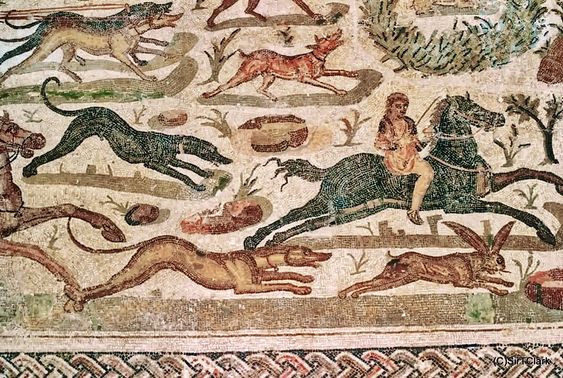
Section 4: Guardians of the Hearth – Dogs in the Fabric of Human Societies
Beyond Hunters and Guardians
The roles of dogs within human societies extended far beyond their initial utilitarian functions as hunters and guardians. As these animals became more ingrained in daily life, their presence was felt in more nuanced ways. Dogs were not only partners in survival; they also held significant places as spiritual guides and were frequently depicted in the myths and cultural artifacts of various civilizations. This spiritual dimension suggests a deeper, more complex relationship between dogs and humans, highlighting a reverence for dogs that transcended practical purposes and ventured into the realm of the sacred.
In many cultures, dogs were thought to possess an innate connection to the spiritual world, acting as protectors not only in the physical sense but also in the spiritual sense. They were often associated with deities or seen as guardians of the afterlife, as evidenced in numerous mythological narratives and funerary practices. This role as spiritual intermediaries is perhaps best exemplified in the depictions of dogs in ancient art and sculpture, where they are often portrayed alongside figures of significant religious and cultural importance.
Reflections in Archaeology
Archaeological discoveries offer a detailed glimpse into the historical roles of dogs within human societies. Excavations have unearthed numerous sites where dogs are found buried alongside humans, with some graves dating back thousands of years. These burials are not merely incidental; they often show dogs placed in a manner that suggests honor and respect, sometimes even with items that imply a belief in an afterlife.
Such findings underscore the belief that dogs were more than mere animals to the people of ancient times; they were vital components of societal and family units. This integration into human life is further evidenced by depictions of dogs in hunting scenes, where they are shown working in concert with humans to track and capture game, an activity that would have required significant training, communication, and mutual respect.
Additionally, dogs were depicted in the protective roles they played within settlements. They were often the first line of defense against predators and intruders, a role that is both practical and profoundly symbolic. The presence of dogs in communal and private spaces as depicted in ancient artifacts suggests their role as perpetual guardians, ever vigilant and ready to defend their human families.
Cultural Significance and Emotional Bonds
The archaeological record also highlights the emotional bonds that formed between dogs and humans, evidenced not just by their roles in life but by the care shown to them after death. The inclusion of dogs in art and spiritual practices points to a cultural significance that goes beyond their physical abilities. Dogs were often portrayed as noble, loyal, and wise, qualities that resonated with human ideals and aspirations.
This deep integration of dogs into the fabric of human life reflects a symbiotic relationship where each species influenced the development of the other. Dogs adapted to the needs and structures of human societies, and humans, in turn, were influenced by the companionship and loyalty of dogs, which may have helped to shape the early development of empathetic and cooperative social behaviors.
In summary, the roles of dogs in ancient human societies were complex and integral to the development of those societies. As guardians of the hearth, dogs secured their place not only within the physical domains of human habitats but also within the cultural and spiritual domains, marking their status as true companions and protectors across the ages.

Section 5: Legacy of the Ancients – Shaping Our Modern Bond with Dogs
From Past to Present
The legacy of these ancient canines continues to deeply influence today’s relationships with dogs. What began millennia ago as a pragmatic partnership rooted in survival has evolved into a profound emotional symbiosis. Today, dogs are far more than mere companions; they are cherished as vital members of families, their roles expanding well beyond basic functional utility to becoming emotional anchors and symbols of unconditional love.
In the modern world, the scope of canine roles has broadened dramatically. Dogs serve as working animals in a variety of fields: they aid law enforcement as police dogs, assist in search-and-rescue missions, and even work in therapeutic settings to help alleviate human suffering. Therapy dogs, for instance, are brought into hospitals, nursing homes, and schools where they provide comfort and relieve stress among patients and students. Search and rescue dogs are trained to locate missing persons in disasters, demonstrating incredible bravery and skill in dangerous environments.
Echoes of Ancient Bonds
The enduring bond between humans and dogs offers profound insights into social evolution, emotional intelligence, and interspecies communication. This relationship underscores how dogs have been intricately woven into the fabric of human society, influencing our cultural landscapes and enriching our lives across generations.
Dogs’ ability to read and respond to human emotions enhances our own emotional intelligence, promoting an understanding that transcends verbal communication and taps into the basic instincts of empathy and care. Their presence in therapeutic settings showcases their capacity to connect and soothe humans in times of distress, proving that their impact can be both healing and transformative.
Moreover, the role of dogs extends into the realms of public safety and assistance. From assisting visually impaired individuals as guide dogs to supporting people with other disabilities, dogs contribute to society in ways that go beyond companionship. Their integration into such diverse roles not only highlights their versatility and intelligence but also reflects the depth of the human-canine bond that has been cultivated over thousands of years.
Reflecting on how dogs have transitioned from ancient guardians and hunters to modern-day heroes in various capacities, it is clear that the legacy of our ancient bonds with dogs continues to shape and enhance human life. As we look to the future, the potential for new roles and new ways to integrate dogs into societal structures seems limitless, promising continued growth in this mutually enriching relationship.
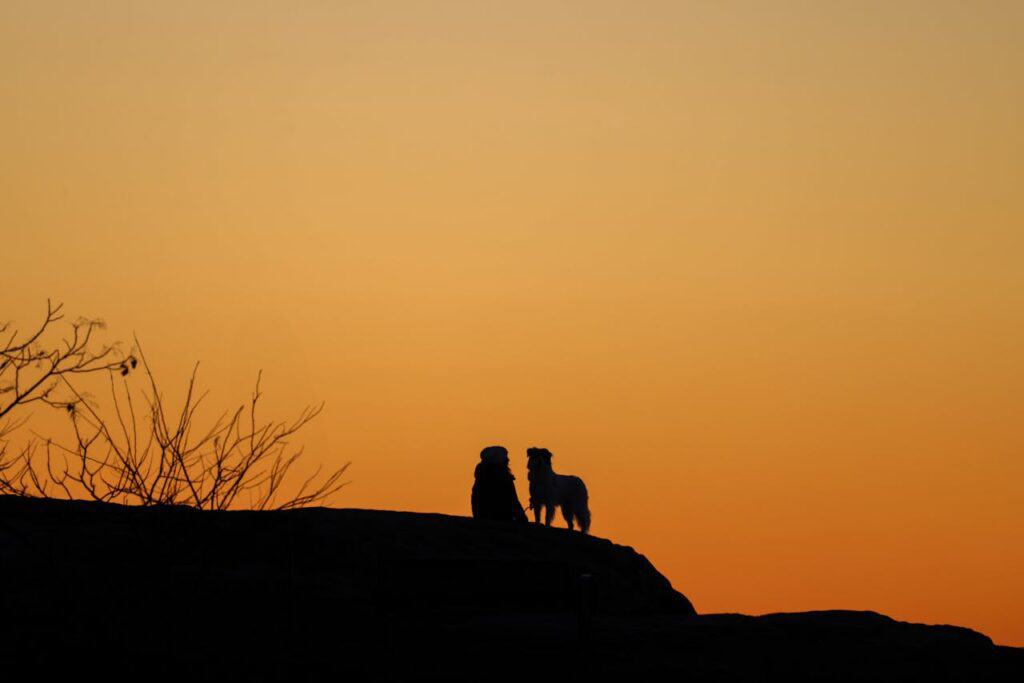
Under the Vastness of Ancient Skies
“Beneath Timeless Stars” is far more than a journey through history; it is a profound tribute to the enduring connection between humans and dogs—a relationship ignited amid the harsh climes of the Ice Age and lovingly honed over thousands of years. This story transcends mere survival; it celebrates an unparalleled partnership that has only grown stronger with the passage of time, evolving into a deep symbol of fidelity and affection.
This bond, forged in the rugged terrains of ancient landscapes, has blossomed into a remarkable emblem of the unwavering companionship and compassion that dogs bring into our lives. It reflects the essence of our humanity, mirroring our own deep-seated desires for connection and understanding. Dogs are not just animals we live with—they participate in our happiest moments and stand by us during our trials, steadfast as guardians of our well-being and soothers of our spirits.
As this relationship continues to unfold, it enriches our everyday experiences and provides a poignant insight into our vast capacity for love and cooperation that transcends species boundaries. Each joyful tail wag, each comforting nuzzle, is a reminder of this age-old bond that has endured through the ages. These creatures are not merely pets; they are family, they are friends, they are trusted confidants, intricately intertwined with the fabric of our lives, leaving their paw prints on our hearts as permanently as the stars under which their ancestors once roamed wild.
Let “Beneath Timeless Stars” move you deeply, stir within you a profound appreciation for these magnificent animals. Every story of a dog and its human is a chapter in a shared narrative—a journey overflowing with lessons in loyalty and the purest form of unconditional love one could ever encounter.
So, to all dog lovers and those yet to experience the joy of canine friendship, let this be an invitation to gaze into the eyes of these noble creatures and see therein boundless love and profound wisdom. This story is not merely about coexistence but about a dynamic and heartfelt companionship, engraved into our very souls, urging us to cherish and nurture the precious bond we share with our canine partners.
